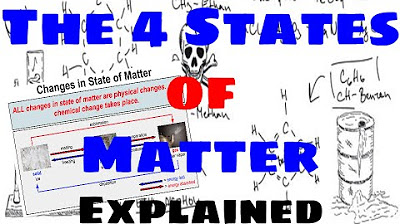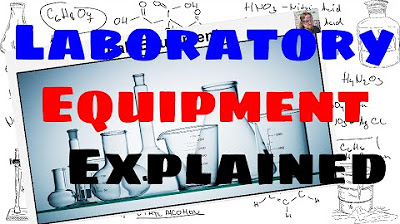The Origin & Influences of Urbanization [AP Human Geography Unit 6 Topic 1]
Summary
TLDRIn this educational video, Mr. Sin explores the origins and influences of urbanization, focusing on site and situation factors, transportation changes, communication technology, economic development, and government policies. He explains how factors like natural resources, trade routes, and the advent of new transportation and communication methods have shaped the growth of cities. Urbanization leads to economic opportunities but also challenges like rising costs, population density, and migration patterns. Government policies, like rent control, impact the affordability and development of cities, while cities become specialized in various industries, creating unique identities and cultural landscapes that evolve over time.
Takeaways
- 😀 Site factors refer to the physical characteristics of a location, such as climate, natural resources, and absolute location, which determine the type of activities or settlements that can occur there.
- 😀 The Fertile Crescent, due to its site factors like fresh water and arable land, became a major center for the rise of civilizations like Mesopotamia, which led to job specialization and societal development.
- 😀 Situation factors describe a place's location relative to surrounding areas and how this influences its growth. For example, Mesopotamia benefited from its proximity to the Mediterranean Sea and Persian Gulf, facilitating trade.
- 😀 The development of transportation systems, like the U.S. interstate system, has led to suburbanization, urban sprawl, and changes in the economy, creating both positive and negative consequences for urban areas.
- 😀 Changes in communication and technology, particularly through the internet, are transforming urban landscapes by enabling remote work and influencing business decisions regarding office space and location.
- 😀 Economic development in urban areas often leads to migration from rural areas due to more job opportunities, but it can also result in higher living costs and overcrowding in cities.
- 😀 As urbanization increases, the demand for housing and services rises, often leading to the creation of informal settlements if cities cannot provide adequate infrastructure.
- 😀 As countries progress through stages of the demographic transition model, migration patterns shift, with rural-to-urban migration predominant in stage two, and counter-urbanization becoming more common in stage four.
- 😀 Government policies, such as price ceilings on rent or incentives for businesses, can significantly impact urban development, affordability, and economic opportunities.
- 😀 Cities now specialize in particular industries, such as healthcare, education, or tourism, creating unique cultural identities and landscapes that continue to evolve over time.
Q & A
What is the difference between site factors and situation factors in urban geography?
-Site factors refer to the physical characteristics of a location, such as climate, natural resources, and terrain, which impact where settlements are established. Situation factors, on the other hand, describe a place in relation to its surrounding features or places, such as proximity to rivers, roads, or other cities that influence the development of a settlement.
Why was the Fertile Crescent an important site for the development of urbanization?
-The Fertile Crescent, located between the Tigris and Euphrates rivers, provided access to fresh water and arable land, which allowed for sedentary agriculture. This led to a stable food supply, job specialization, and the formation of complex societies, making it one of the six cradles of urbanization.
How did improvements in transportation impact urbanization and settlement patterns?
-Improvements in transportation, such as the development of the interstate system in the U.S., allowed people and goods to move more efficiently, leading to increased suburbanization and urban sprawl. However, it also resulted in longer commute times, higher reliance on automobiles, and air pollution.
What is the connection between communication technology and urbanization?
-Advancements in communication technology, especially the internet, have made it easier for people and businesses to connect globally. This has led to more people working remotely, reducing the need for office spaces in central business districts and impacting local economies and businesses that rely on commuter activity.
What role does economic development play in urbanization?
-Economic development attracts people from rural areas to urban centers, offering more job opportunities. However, rapid urbanization can lead to higher population density, increased housing costs, and affordability issues, requiring cities to manage infrastructure and support services for their growing populations.
How does government policy influence urbanization?
-Government policies such as rent control, taxation, and incentives for businesses can either encourage or hinder urbanization. For instance, price ceilings on rent can make housing more affordable but may lead to shortages, while tax incentives can attract businesses and residents to urban areas, stimulating economic growth.
How does the demographic transition model relate to urbanization?
-In countries at stage two of the demographic transition model, high birth rates and lower mortality rates lead to rapid urbanization as people migrate to cities in search of better economic opportunities. In contrast, countries at stage four experience counter-urbanization, where people move from cities to suburban or rural areas.
What impact does remote work have on the urban landscape?
-Remote work reduces the need for businesses to maintain office spaces in city centers, which can lead to a decrease in downtown traffic and activity. This shift also affects local businesses that relied on office workers, such as restaurants and retailers, and may lead to changes in real estate markets.
How does urban specialization contribute to a city's identity?
-As cities specialize in industries such as manufacturing, healthcare, or tourism, they develop distinct identities that shape their cultural landscape. This specialization helps cities become hubs for certain services or goods, attracting businesses, workers, and tourists, further influencing urban growth.
What are the social and economic challenges of increased urbanization?
-Increased urbanization can lead to overcrowding, strain on infrastructure, higher costs of living, and increased pollution. Cities must balance economic growth with the provision of adequate housing, healthcare, education, and transportation services to maintain quality of life for residents.
Outlines

Этот раздел доступен только подписчикам платных тарифов. Пожалуйста, перейдите на платный тариф для доступа.
Перейти на платный тарифMindmap

Этот раздел доступен только подписчикам платных тарифов. Пожалуйста, перейдите на платный тариф для доступа.
Перейти на платный тарифKeywords

Этот раздел доступен только подписчикам платных тарифов. Пожалуйста, перейдите на платный тариф для доступа.
Перейти на платный тарифHighlights

Этот раздел доступен только подписчикам платных тарифов. Пожалуйста, перейдите на платный тариф для доступа.
Перейти на платный тарифTranscripts

Этот раздел доступен только подписчикам платных тарифов. Пожалуйста, перейдите на платный тариф для доступа.
Перейти на платный тарифПосмотреть больше похожих видео

The Four States of Matter - Explained

Lab Equipment - Explained

3. Gr 11 Life Sciences - Population Ecology - Theory 3 Mark Recapture Method

4. Gr 11 Life Sciences - Population Ecology - Worksheet 1

PENJASKES KELAS X - SOFTBALL

Introduction to Culture [AP Human Geography Review Unit 3 Topic 1]

Menentukan Mr ( massa molekul relatif )
5.0 / 5 (0 votes)
